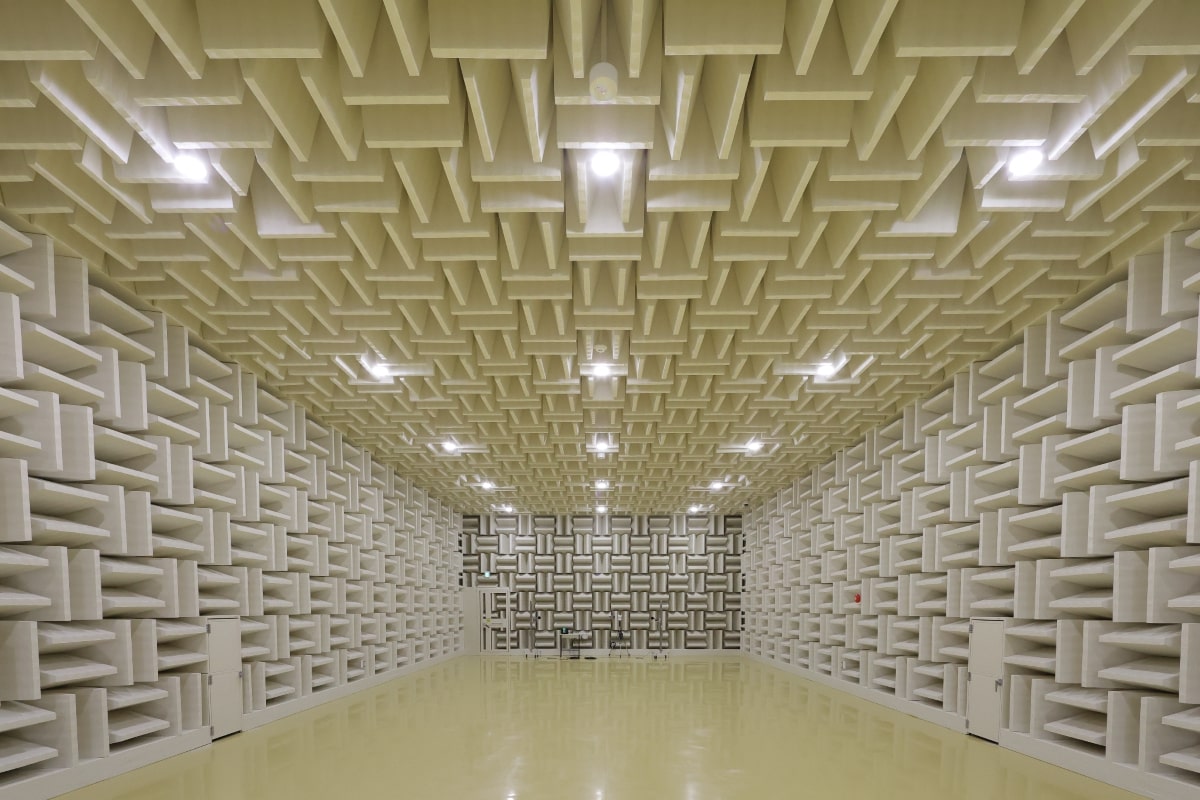The Cutting Edge of Anechoic Chamber Design: Comfort Without the Ear-Piercing Sensation
08/06/2025

MFAC / MSAC
Introduction: What Is the “Discomfort” in an Anechoic Chamber?
Many people entering an anechoic chamber for the first time report a feeling of “ear pressure,” “a piercing sensation,” or that “it’s hard to stay inside for long.”
This discomfort stems from the extremely low reverberation environment created by traditional wedge-type absorbers, which can cause psychological and physiological unease.
ISO 3745:2012 Perspective – Performance Is Defined by the “Inverse Square Law”
Up until ISO 3745:2003, the design of anechoic chambers was strictly based on achieving a sound absorption coefficient of 0.99 or higher, using high-performance absorptive materials (based on cut-off frequency).
However, in ISO 3745:2012, the only requirement is that the inverse square law holds, significantly expanding design flexibility.
Establishing the Inverse Square Law = Anechoic Chamber Performance
Even if the absorption coefficient is slightly lower, as long as a -6 dB reduction per doubling of distance (inverse square law) is observed at the measurement points, the environment qualifies as an anechoic chamber under ISO.
In other words, ISO-compliant precision testing is possible even in “ear-friendly” designs.
Our Approach: Designing with the Comfort of BFW in Mind
At Sonora, we are promoting chamber designs using Broadband Fractal Wedges (BFW), which provide a durable and less intrusive acoustic environment, replacing conventional glass wool wedges.
Especially in low to mid-frequency sound power measurements (per ISO 3744), we have achieved a proven balance between high absorption performance and acoustic comfort.
Conclusion: Beyond the Notion That “Anechoic Chambers Are Too Quiet”
Anechoic chambers are no longer uncomfortable, silent spaces that cause physical discomfort.
With modern design philosophies and material innovations, we can now create spaces that are both comfortable to enter and ideal for precise acoustic testing.
We invite you to experience the next generation of anechoic chamber design.